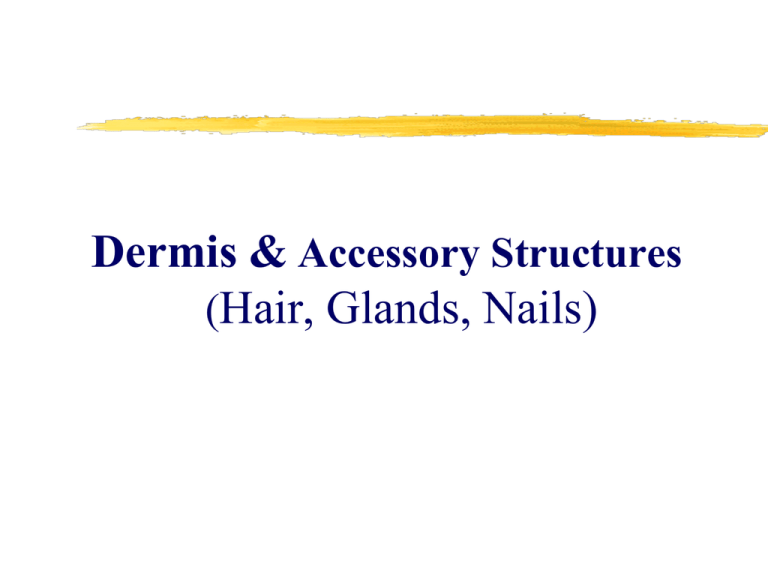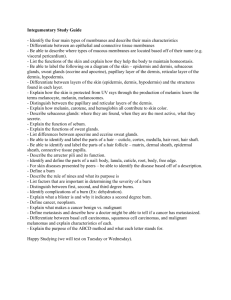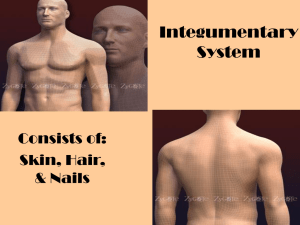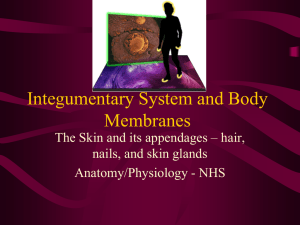6. Skin - Dermis WEB
advertisement

Dermis & Accessory Structures (Hair, Glands, Nails) Dermis Beneath epidermis The location for blood vessels, nerves, glands, hair follicles, and arrector pili (smooth muscle; contractions produce “goose bumps”) Fig. 5.2 Dermis - Structure Papillary region - upper Reticular region - 80% layer - 20% Underneath the papillary Areolar connective tissue layer Dense irregular connective tissue Fibers tolerate limited stretching; “stretch marks” can appear Hair Functions: Protection Insulation Sensation Secondary sexual characteristic to attract mates Hair Cont. Hair Follicle – site of hair origin Hair: Shaft (above skin surface) Root & bulb (underneath skin surface) Bulb contains matrix – dividing layer; builds hair Hair is made out of keratin Nails tightly packed, hard, keratinized cells nail matrix - site of nail growth; under root of nail Sebaceous (Oil) Glands connected to hair follicles in the dermis secrete sebum (oil) keeps hair from drying prevents water evaporation from skin keeps skin soft, supple inhibits growth of many bacteria busy at puberty Sudoriferous (Sweat) Glands Eccrine (merocrine) glands: In the skin that covers most parts of our bodies Produce a thin, watery liquid that contains salt and small amounts of other bodily wastes Help cool the body through the process of evaporation Apocrine glands: In the skin of the armpits, around nipples, and in the groin Produce a thicker salty and acidic solution Produce “body odor” (in contact with bacteria) Become active when a person reaches puberty Secrete more during emotional stress & sexual arousal Apocrine & Eccrine Sweat Glands Other Specialized Integumentary Glands Ceruminous glands – together with oil glands produce ear wax protect against foreign particles & small insects Burns








